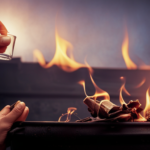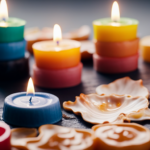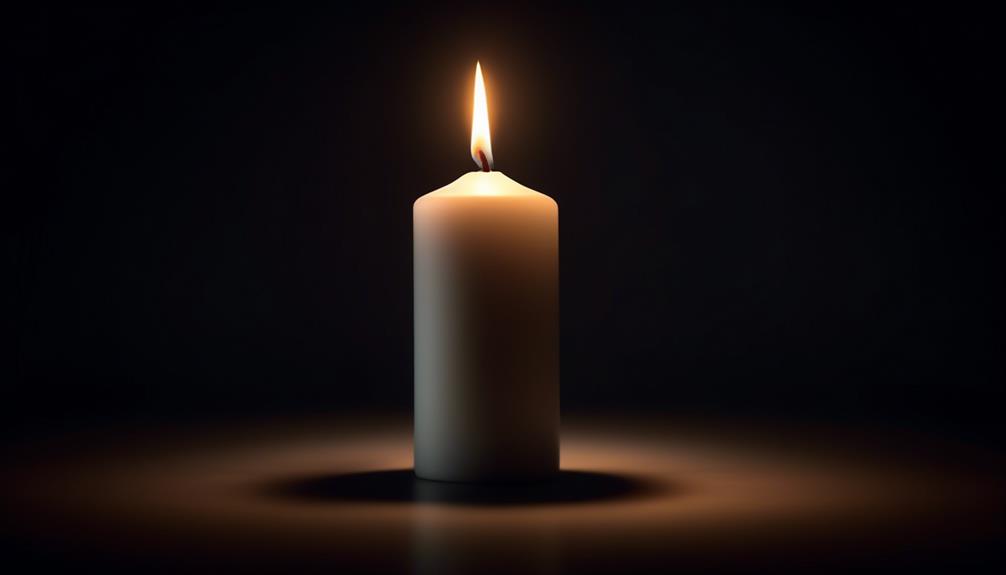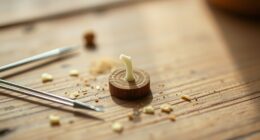Did you know that around 1 billion pounds of candle wax are purchased annually in the United States? With such a significant amount of excess wax, it is crucial to discover innovative ways to reuse it and minimize waste.
In this article, we will explore various practical and fun uses for leftover candle wax. From making new candles to creating wax art projects, there are endless possibilities to transform that unused wax into something useful and enjoyable.
So, let’s dive in and discover the exciting world of repurposing candle wax!
Key Takeaways
- Repurpose leftover candle wax to create new candles and wax melts, saving money and reducing waste.
- Use leftover candle wax to make fire starters and waterproof matches for outdoor adventures.
- Create elegant wax seals using leftover candle wax, adding charm to correspondence.
- Utilize leftover candle wax as a food-safe alternative and versatile edible coating, preserving freshness and adding visual appeal to culinary creations.
New Candles
We can repurpose leftover candle wax to create new candles. Instead of throwing away the remnants of our used candles, we can melt them down and pour the wax into new candle holders.
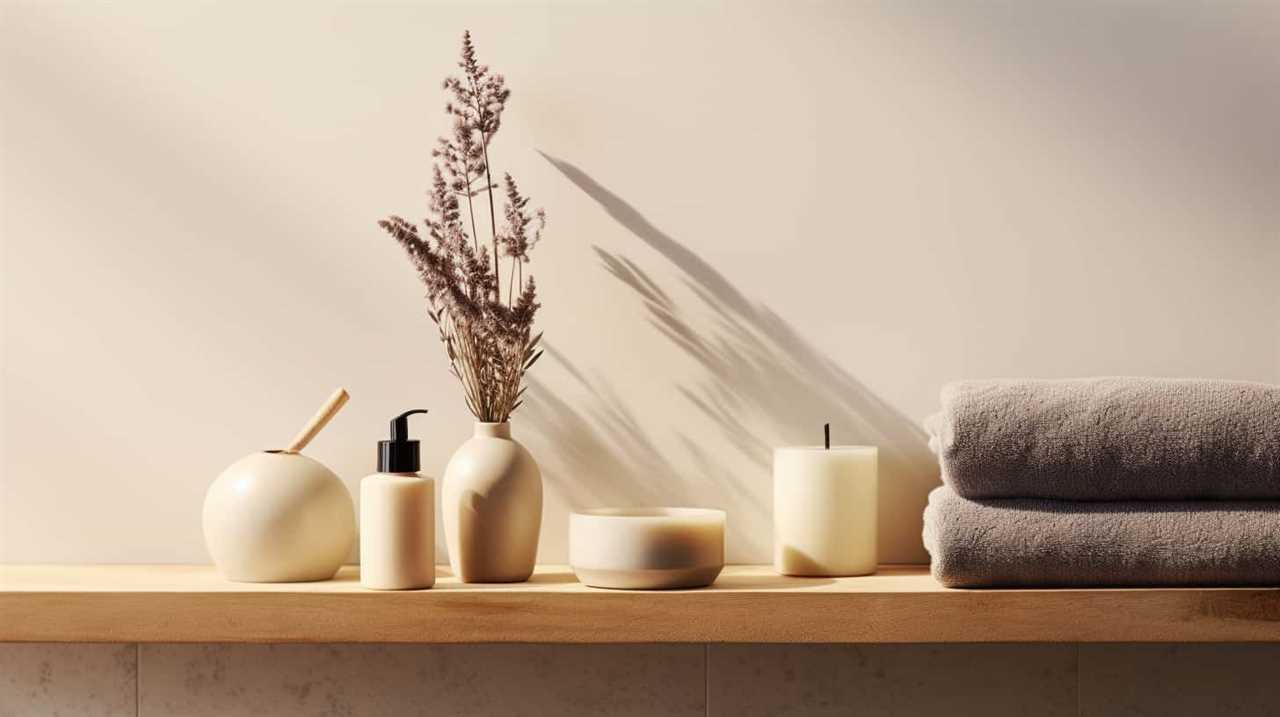
This not only allows us to reuse the wax, but also gives us the opportunity to create unique and customized candles. To create new candle holders, we can use various materials such as mason jars, teacups, or even seashells.
Additionally, there are different candle making techniques that we can employ, such as layering different colored waxes or adding scents and essential oils.
Wax Melts
One option for repurposing leftover candle wax is to make wax melts. Wax melts are small pieces of scented wax that are melted in a wax warmer to release fragrance into the air. Making your own wax melts is a simple and cost-effective way to enjoy your favorite scents without having to buy expensive commercial products.
There are many wax melt recipes available online that allow you to customize the fragrance and color of your melts. The benefits of wax melts include long-lasting scent, easy cleanup, and the ability to mix and match scents to create your own unique combinations.
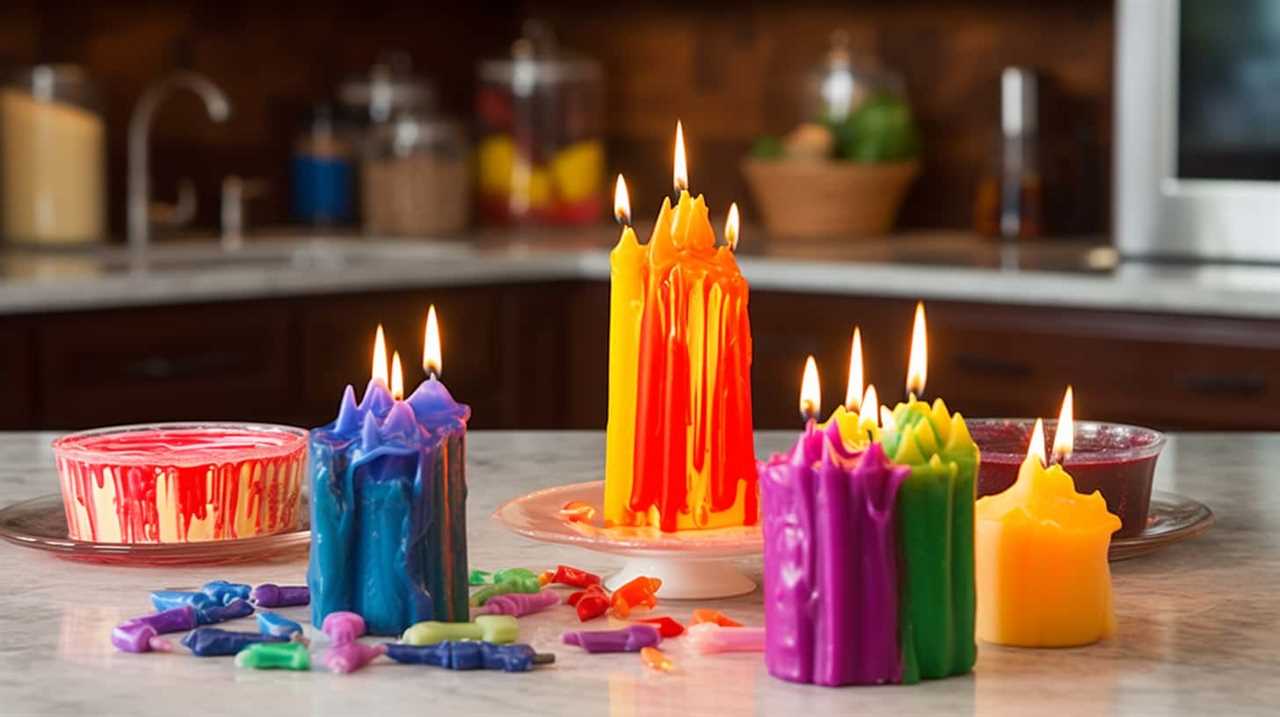
Fire Starters
Sometimes, we find ourselves with leftover candle wax and wonder what to do with it. One practical and useful way to repurpose candle wax is by making fire starters.
Fire starters are essential for starting fires, whether it’s in your fireplace or while camping. To create fire starters, all you need is some candle wax, dryer lint, and an empty egg carton.
Start by filling each section of the egg carton with dryer lint. Then, melt the candle wax and pour it over the lint, making sure to saturate it. Allow the wax to cool and harden, and then cut each section of the egg carton into individual fire starters.
These DIY fire starters are excellent for easily igniting fireplace logs or helping you start a fire while enjoying the great outdoors on your camping trip.
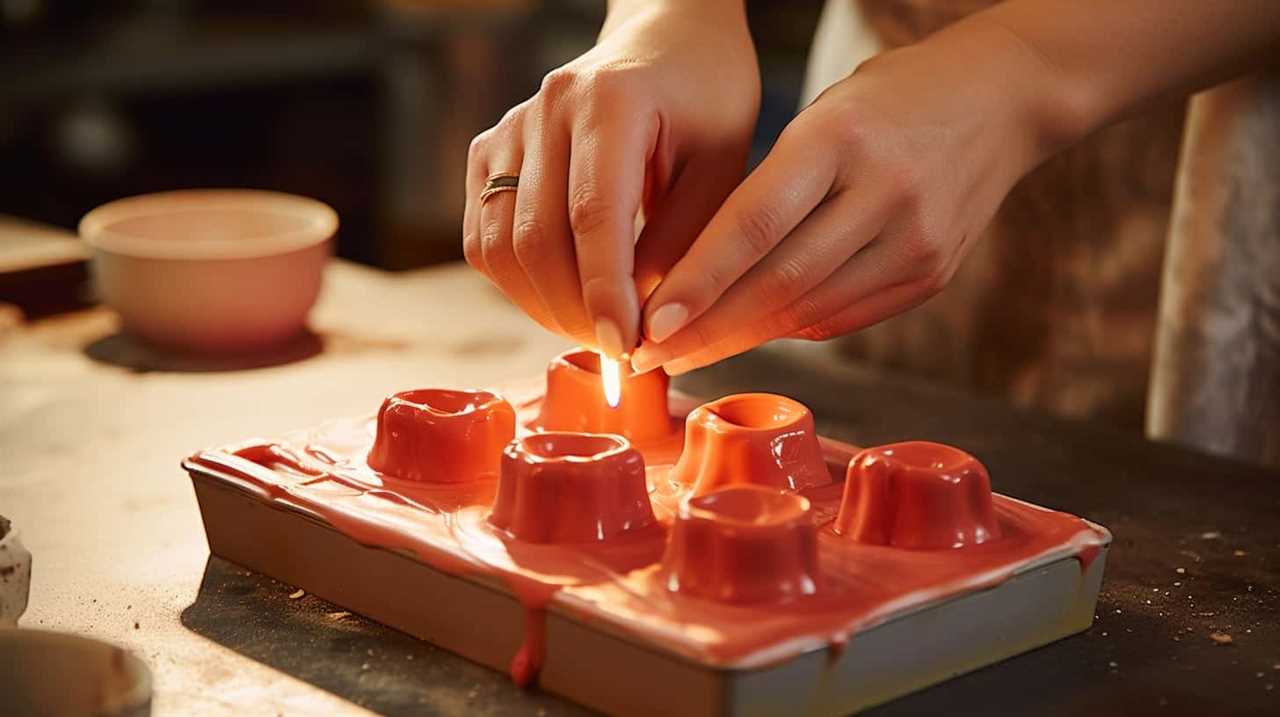
Waterproofing Matches
To waterproof matches, simply dip them in melted candle wax. This simple technique can be incredibly useful, especially when you’re out in the wilderness or facing wet conditions. Waterproof matches are essential for starting fires in damp environments.
The melted candle wax creates a protective coating around the matchstick, preventing it from getting wet and making it easier to ignite. The process is straightforward: melt the candle wax in a heat-resistant container, dip the match heads into the melted wax, and let them dry. Once the wax hardens, the matches will be ready to use in any wet or rainy situation.
This DIY method not only saves you money but also ensures that you have reliable fire-starting tools on hand when you need them most. So, the next time you’re preparing for an outdoor adventure, don’t forget to waterproof your matches using leftover candle wax.
Wax Seals
We can use leftover candle wax to create wax seals. Wax seals have been used for centuries to authenticate documents and letters, and they continue to add a touch of elegance and charm to correspondence even in the digital age. To create wax seals, you will need a wax seal stamp, which can be found in various designs and sizes. Simply melt the candle wax and pour it onto the desired surface, then quickly press the stamp into the wax. As the wax cools and hardens, it forms a seal with the imprint of the stamp. Wax sealing techniques have evolved over time, but the concept remains the same. In the table below, you can see a brief history of wax seals and their significance.
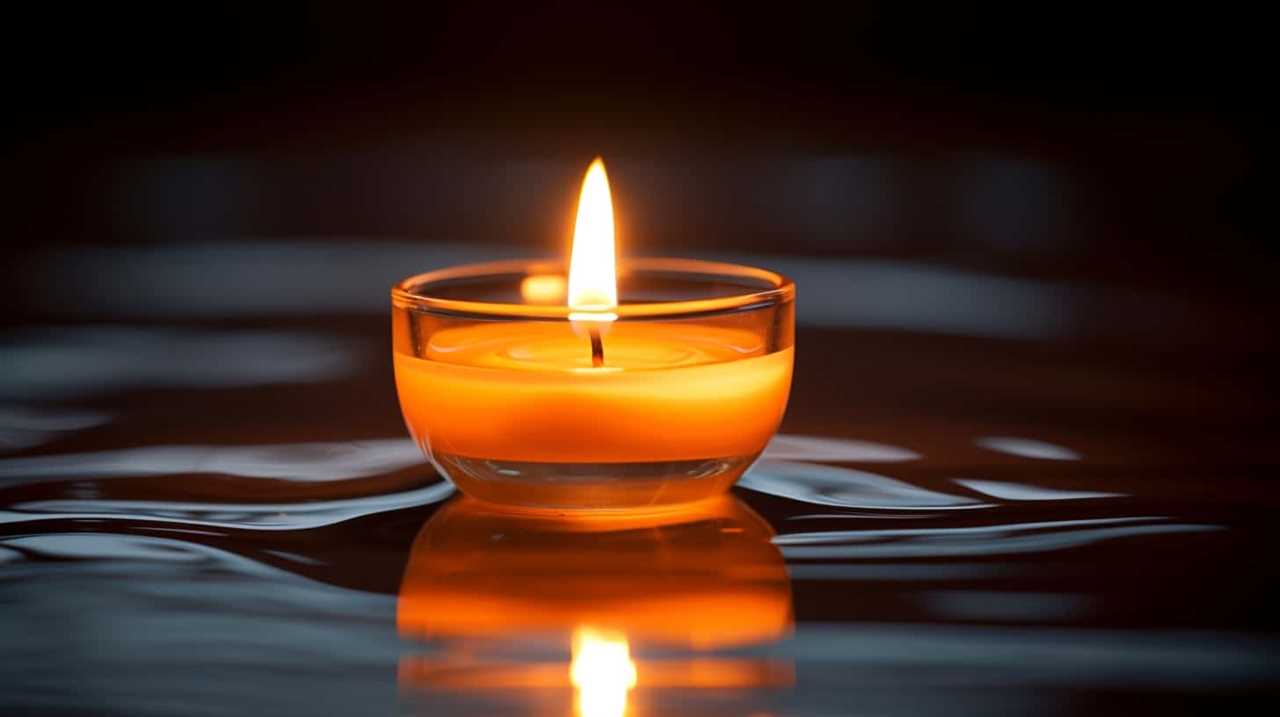
| Era | Significance | Materials Used |
|---|---|---|
| Ancient Times | Used to authenticate important documents | Beeswax, resin |
| Middle Ages | Symbol of authority and power | Beeswax, lac |
| Renaissance | Indicated social status and family heritage | Beeswax, colorants |
| Modern Era | Added a personal touch to letters and invitations | Paraffin wax |
| Present Day | Used for decorative purposes and crafts | Soy wax, additives |
Now that we’ve explored the art of wax seals, let’s move on to another interesting use for leftover candle wax – coating for cheese or fruits.
Coating for Cheese or Fruits
When it comes to finding a food-safe alternative for coating cheese or fruits, leftover candle wax can be a versatile option.
This edible coating not only adds a unique touch to the presentation of your dishes but also enhances their flavor.
Food-Safe Wax Alternative
For coating cheese or fruits, leftover candle wax can serve as a food-safe alternative. Instead of throwing away your used candle wax, consider repurposing it to create a natural and eco-friendly coating for your food items. Here are some reasons why food-safe wax alternatives are a great choice:
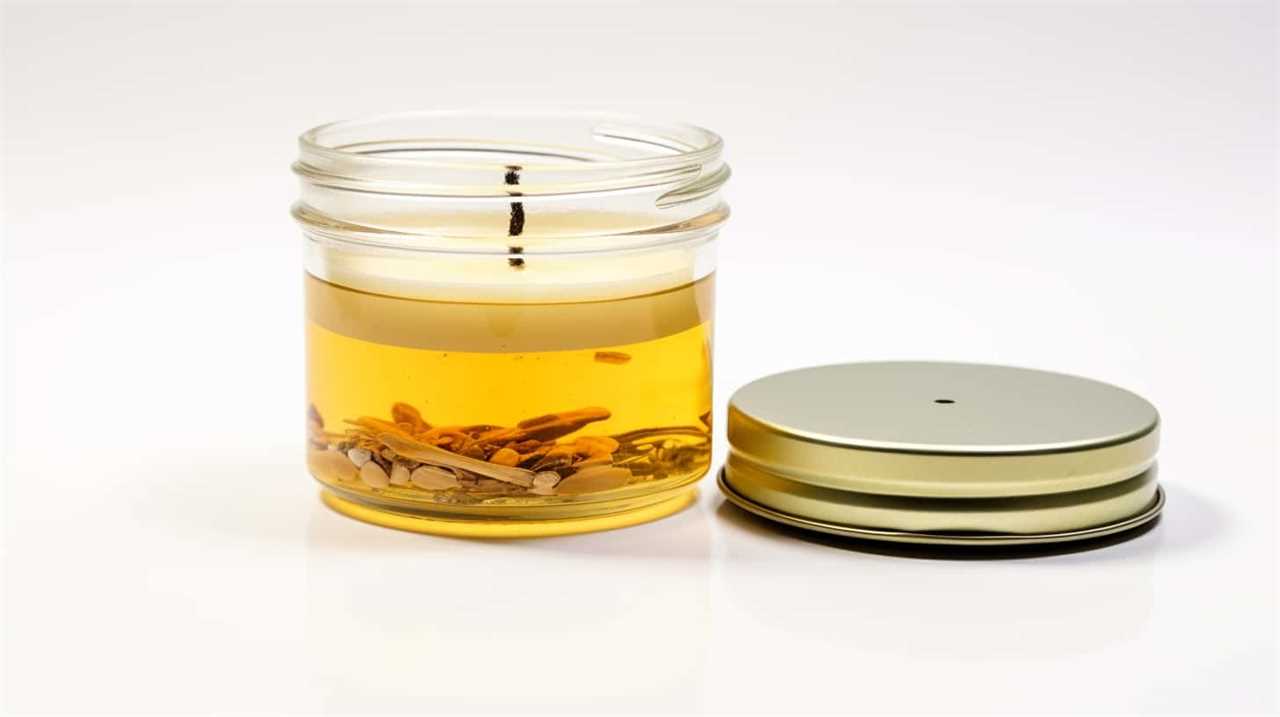
- Environmentally friendly: By reusing candle wax, you’re reducing waste and minimizing your environmental impact.
- Cost-effective: Making your own food-safe wax coating is a budget-friendly option compared to purchasing commercial alternatives.
- Customizable: You can mix different colors and scents of leftover candle wax to create a unique coating for your cheese or fruits.
- Easy to apply: Simply melt the candle wax and brush it onto the surface of your food items for a smooth and protective coating.
- Preserves freshness: The wax coating helps to seal in moisture and protect the cheese or fruits from air exposure, keeping them fresher for longer.
Versatile Edible Coating
To create a versatile edible coating for cheese or fruits, simply melt and brush the leftover candle wax onto the surface for a smooth and protective layer. This DIY food preservation technique not only helps extend the shelf life of your favorite cheeses and fruits, but it also adds an interesting twist to your culinary creations.
The melted candle wax acts as a barrier, preventing moisture loss and keeping the cheese or fruit fresh for longer periods. Additionally, using candle wax as an edible coating eliminates the need for plastic wraps or other non-biodegradable materials, making it an eco-friendly alternative.
It’s important to note that when using candle wax for food applications, it’s crucial to ensure that the wax is free from any harmful additives or fragrances.
Enhances Flavor and Presentation
We found that coating cheese or fruits with leftover candle wax enhances their flavor and presentation. It may sound unusual, but candle wax can actually be used to infuse unique flavors into your favorite foods.
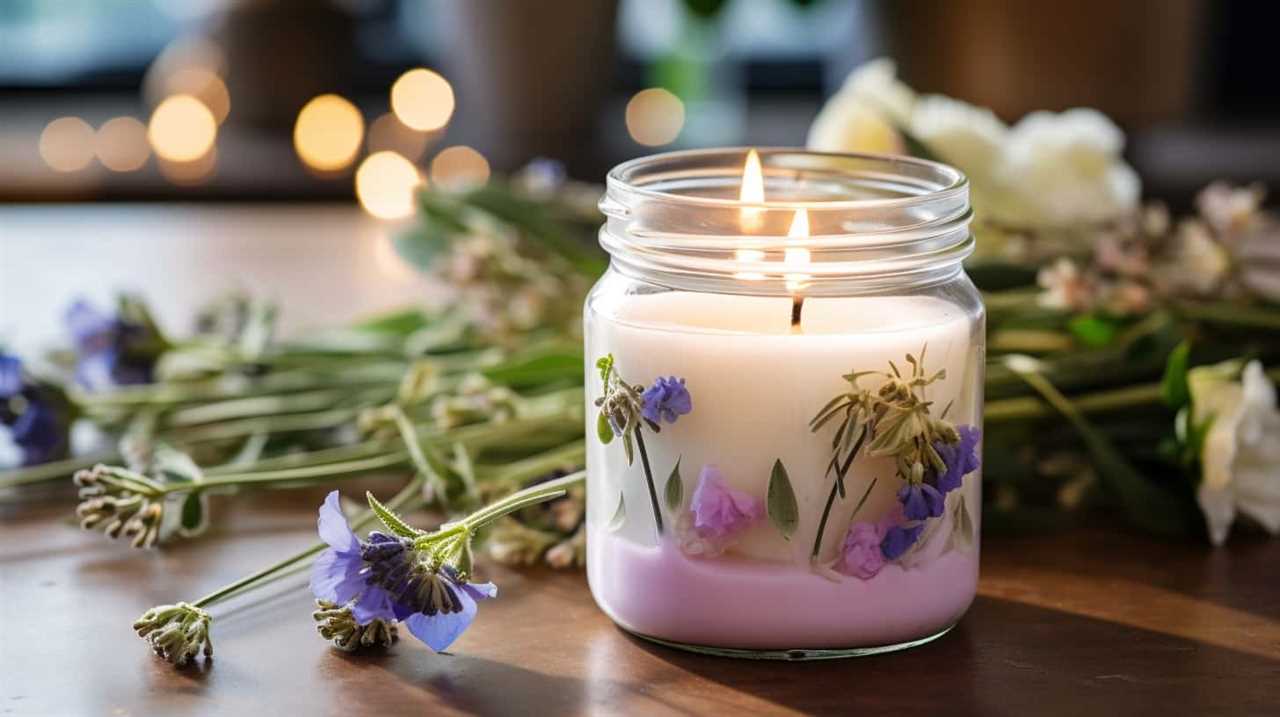
Here are some ways in which leftover candle wax can elevate the taste and appearance of cheese or fruits:
- Flavor infusion: The wax acts as a barrier, sealing in the natural flavors of the cheese or fruits and allowing them to intensify over time.
- Decorative elements: By adding a layer of colored or scented wax, you can create visually appealing and aromatic presentations for your cheese or fruit platters.
- Longer shelf-life: The wax coating helps preserve the freshness and texture of the cheese or fruits, extending their shelf-life.
- Protection against moisture: The wax creates a protective layer, preventing moisture from seeping into the cheese or fruits and affecting their taste and texture.
- Easy removal: The wax can be easily peeled off, leaving behind a clean and beautifully presented cheese or fruit.
Coating cheese or fruits with leftover candle wax not only enhances their flavor but also adds decorative elements to your culinary creations.
Rust Prevention
When it comes to rust prevention, candle wax can be a surprisingly effective solution. The wax creates a protective barrier that prevents moisture from reaching the metal surface, which is essential for rust formation.
Candle Wax for Rust
One effective way to prevent rust is by using leftover candle wax. Candle wax can be a useful tool in rust prevention due to its protective properties. Here are some ways candle wax can be used for rust prevention:
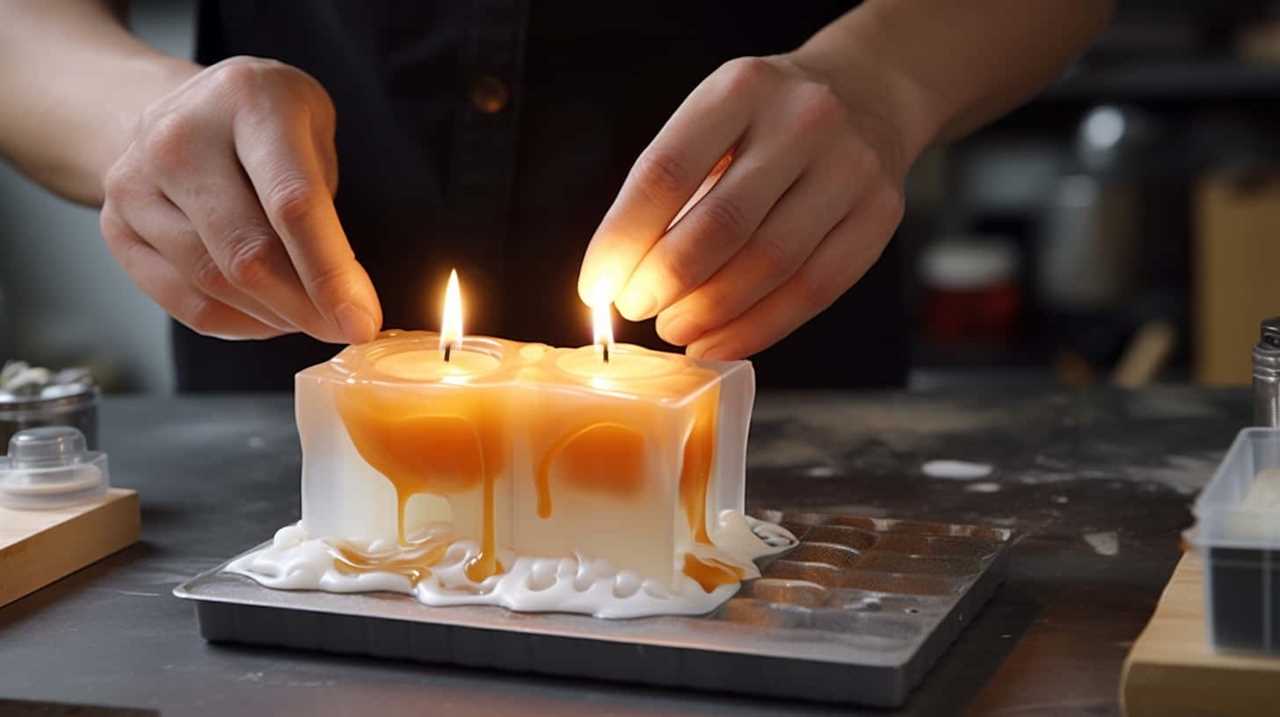
- Coating Metal Surfaces: Applying a thin layer of melted candle wax onto metal surfaces can create a protective barrier against moisture and air, preventing rust formation.
- Sealing Small Cracks: Wax can be used to seal small cracks and crevices in metal objects, preventing water from seeping in and causing rust.
- Protecting Tools and Equipment: Coating tools and equipment with candle wax after use can help prevent rust formation during storage.
- Lubricating Metal Parts: Wax can act as a lubricant for metal parts, reducing friction and preventing rust caused by wear and tear.
- Preserving Outdoor Metal Furniture: Applying a layer of candle wax to outdoor metal furniture can protect it from rust caused by exposure to the elements.
These simple methods demonstrate the versatility of candle wax in rust prevention, offering an affordable and accessible solution for protecting metal objects.
Wax as Rust Inhibitor
Using wax as a rust inhibitor is an effective way to protect metal objects from corrosion. Wax can be a great alternative to candles when it comes to preserving metal.
The wax creates a protective barrier on the surface of the metal, preventing moisture and oxygen from coming into contact with it. This barrier helps to inhibit the formation of rust, which can cause significant damage to metal objects over time.
When using wax for metal preservation, it’s important to apply a thin, even layer of wax to the surface of the metal and ensure that it’s completely dry before using or storing the object. Regular reapplication may be necessary to maintain the protective barrier and prevent rust from forming.
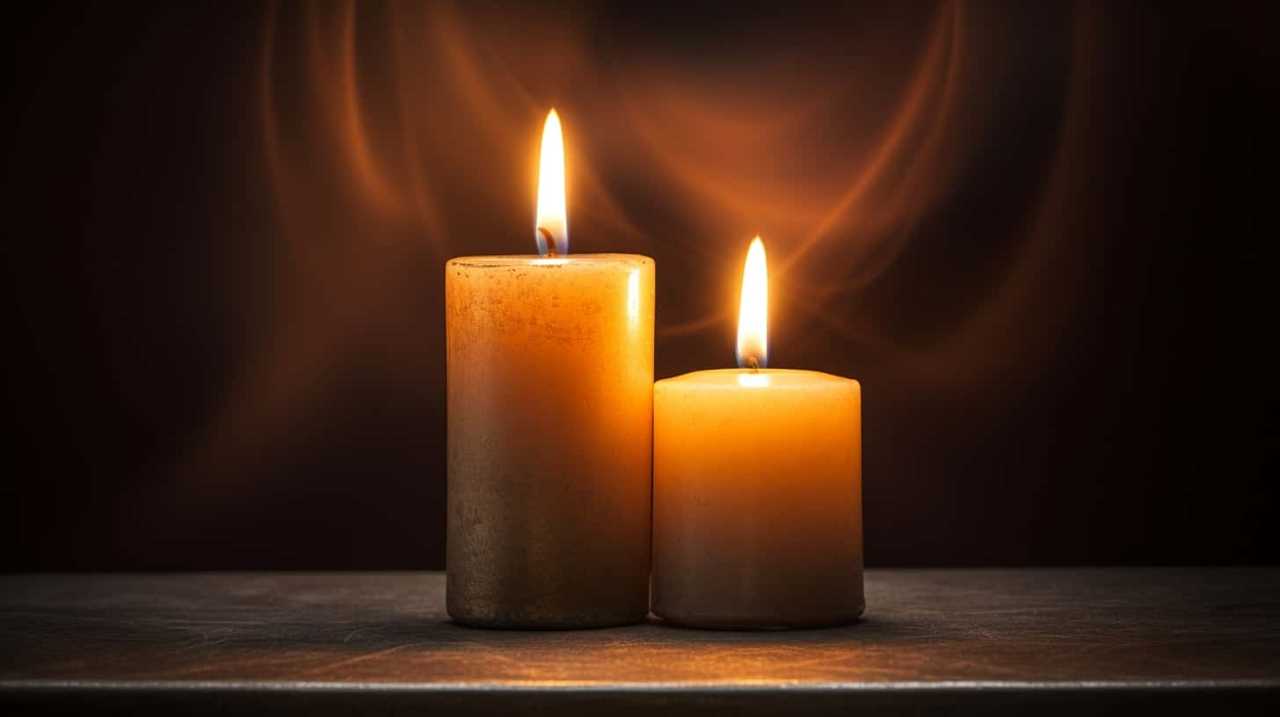
Wax Paper Alternative
We can use a small amount of leftover candle wax as an alternative to wax paper. This not only helps reduce waste but also provides a sustainable and eco-friendly option for packaging.
Here are some benefits of using leftover candle wax as a wax paper substitute:
- It’s cost-effective: Rather than buying wax paper, you can repurpose candle wax that would otherwise go to waste.
- It’s customizable: You can melt the candle wax and spread it thinly on parchment paper to create your own custom-sized wax paper.
- It’s reusable: Unlike traditional wax paper, leftover candle wax can be reused multiple times, further reducing waste.
- It has a natural scent: Depending on the candle, the wax paper alternative can have a pleasant aroma.
- It’s biodegradable: When you’re done using it, the leftover candle wax can be composted, making it an environmentally friendly choice.
Now, let’s move on to the next topic: homemade lip balm.
Homemade Lip Balm
Now let’s talk about making your own homemade lip balm using leftover candle wax.

We’ve a simple lip balm recipe that will help you repurpose your wax and create a nourishing product for your lips.
Making your own lip balm has many benefits, including knowing exactly what ingredients are in it and being able to customize it to your preferences.
Lip Balm Recipe
Creating a homemade lip balm is a simple and practical way to repurpose leftover candle wax. Not only does it allow you to reduce waste, but it also gives you the opportunity to customize your lip care routine.
Making your own lip balm has several benefits:
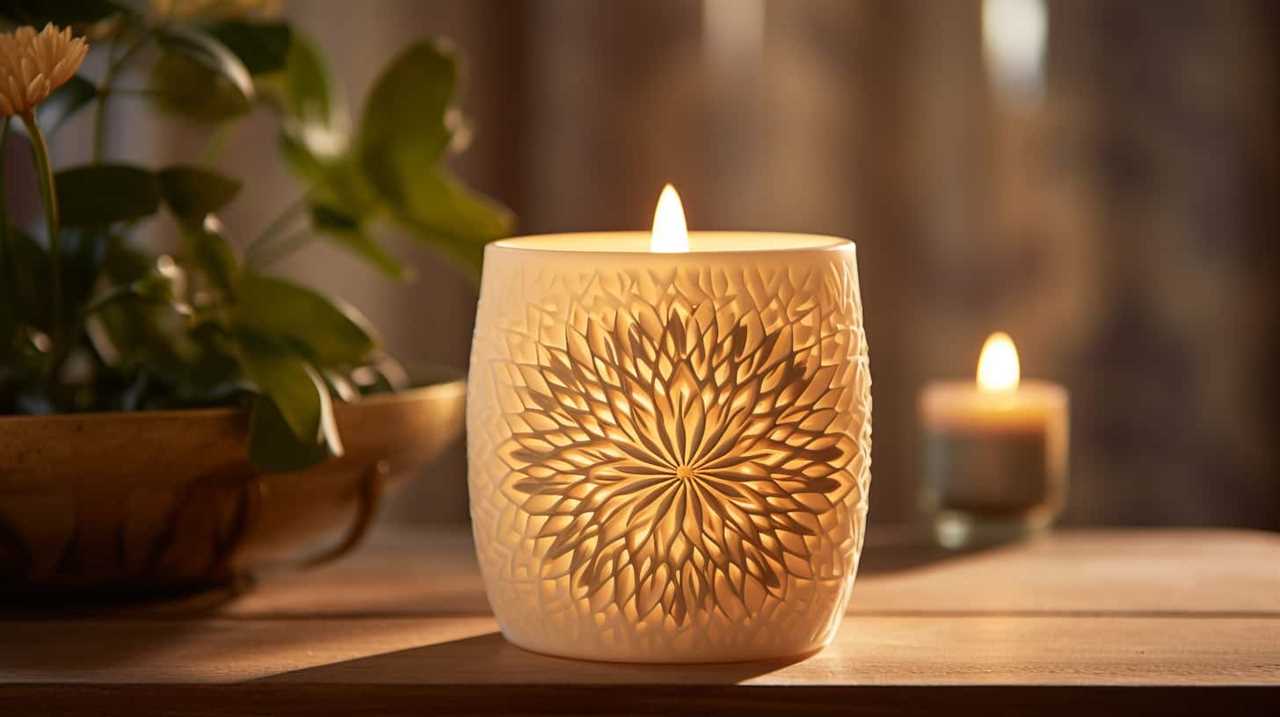
- Cost-effective: Homemade lip balm is much more affordable compared to store-bought options.
- Natural ingredients: You have full control over the ingredients used, ensuring that your lip balm is free from harmful chemicals.
- Hydration: DIY lip balms are often infused with moisturizing oils and butters, providing intense hydration to your lips.
- Healing properties: Certain ingredients like beeswax and shea butter have soothing and healing properties, perfect for dry and chapped lips.
- Personalization: You can add your favorite scents and flavors to create a lip balm that suits your preferences.
Benefits of Homemade
To continue repurposing leftover candle wax, let’s explore the benefits of making homemade lip balm.
Homemade lip balm offers several advantages over store-bought options. Firstly, it allows you to control the ingredients that go into the product, ensuring that you’re using only natural and safe substances on your lips. Many commercial lip balms contain synthetic additives and chemicals that can be harmful to your skin.
Secondly, making your own lip balm can be cost-effective, especially if you already have the necessary ingredients from making homemade candles.
Finally, homemade lip balm can be customized to suit your preferences, allowing you to experiment with different scents, flavors, and textures.
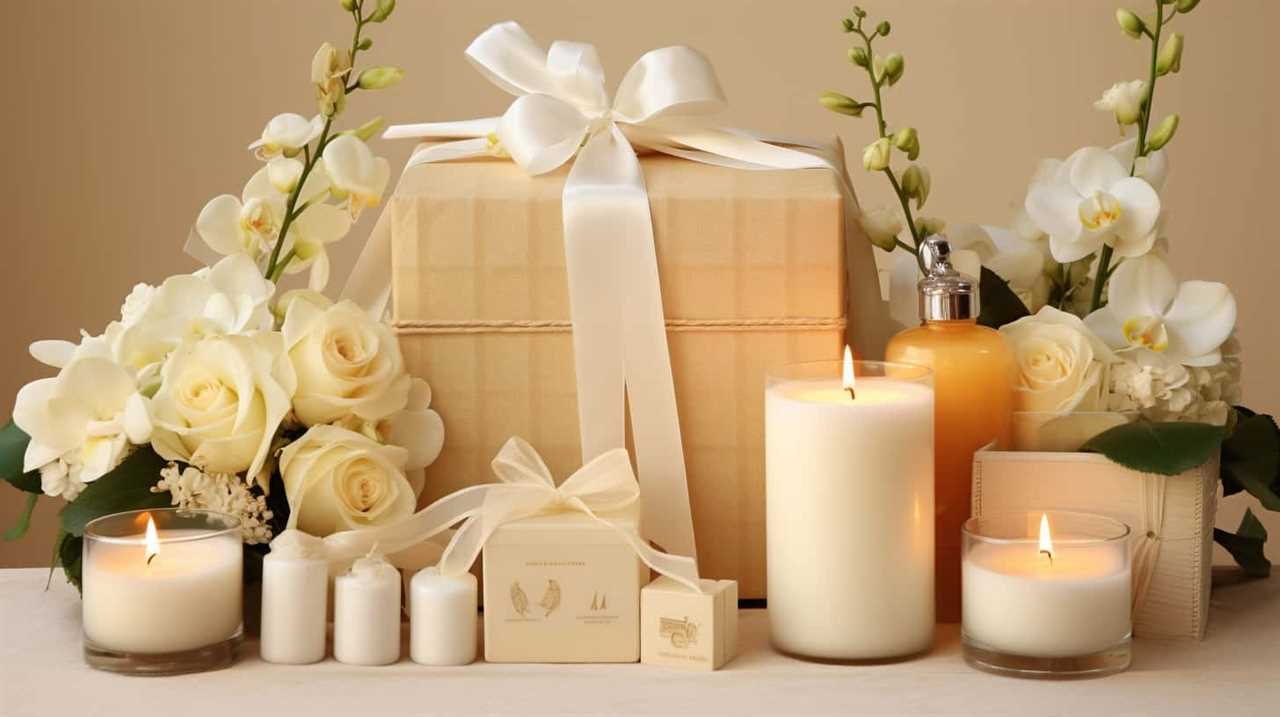
Wax Crayons
How can we transform leftover candle wax into wax crayons? It’s a simple and creative way to repurpose the wax and create something fun for kids. Here are some steps to make your own wax crayons:
- Gather all your leftover candle wax and break it into small pieces.
- Melt the wax in a double boiler or a microwave-safe container.
- Add color to the melted wax by using non-toxic crayon pigments or food coloring.
- Pour the melted wax into mold trays, such as silicone ice cube trays or candy molds.
- Let the wax cool and harden completely before removing them from the molds.
By making your own wax crayons, you can’t only reduce waste but also create unique colors and shapes for your artwork. Furthermore, wax crayons can be used for various techniques like wax sculptures and wax resist, adding interesting textures and effects to your drawings.
Wax Art Projects
With leftover candle wax transformed into wax crayons, we can now explore the exciting world of wax art projects.
One popular form of wax art is creating wax sculptures. To make a wax sculpture, first, gather your leftover candle wax and melt it in a double boiler. Once melted, you can pour the wax into a mold or shape it with your hands while it’s still malleable. Allow it to cool and harden before removing it from the mold.
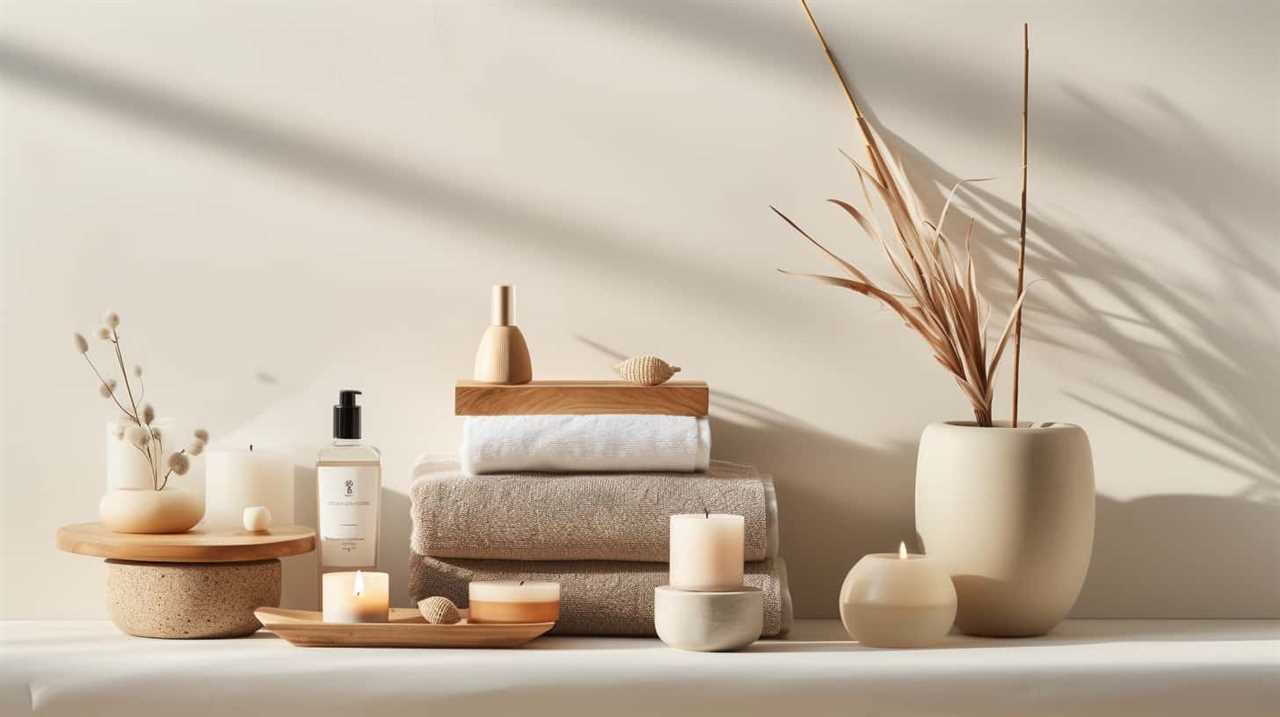
Another great way to use candle wax in art is through wax painting. This technique involves melting the wax and mixing it with pigments to create vibrant colors. The melted wax is then applied to a surface, such as canvas or wood, using brushes or other tools. The wax adds texture and depth to the artwork, creating a unique visual effect.
Frequently Asked Questions
Are There Any Safety Precautions to Keep in Mind When Using Leftover Candle Wax for New Candles?
When using leftover candle wax for new candles, it’s important to take safety precautions. Ensure proper ventilation, use a double boiler to melt the wax, and never leave it unattended. Alternatively, consider making wax melts or repurposing the wax for crafts.
Can I Use Any Type of Wax for Making Wax Melts, or Are There Specific Types That Work Best?
We can use different types of wax for making wax melts, such as soy or beeswax. It’s important to choose the right wax for optimal scent throw and melting properties. Let us share some tips and tricks for DIY candle making using leftover candle wax.
How Can I Safely Use Leftover Candle Wax as Fire Starters?
To safely use leftover candle wax as fire starters, we recommend melting the wax and pouring it into a mold or container. Once solidified, place a wick in the center. These DIY fire starters are a creative use for leftover candle wax.
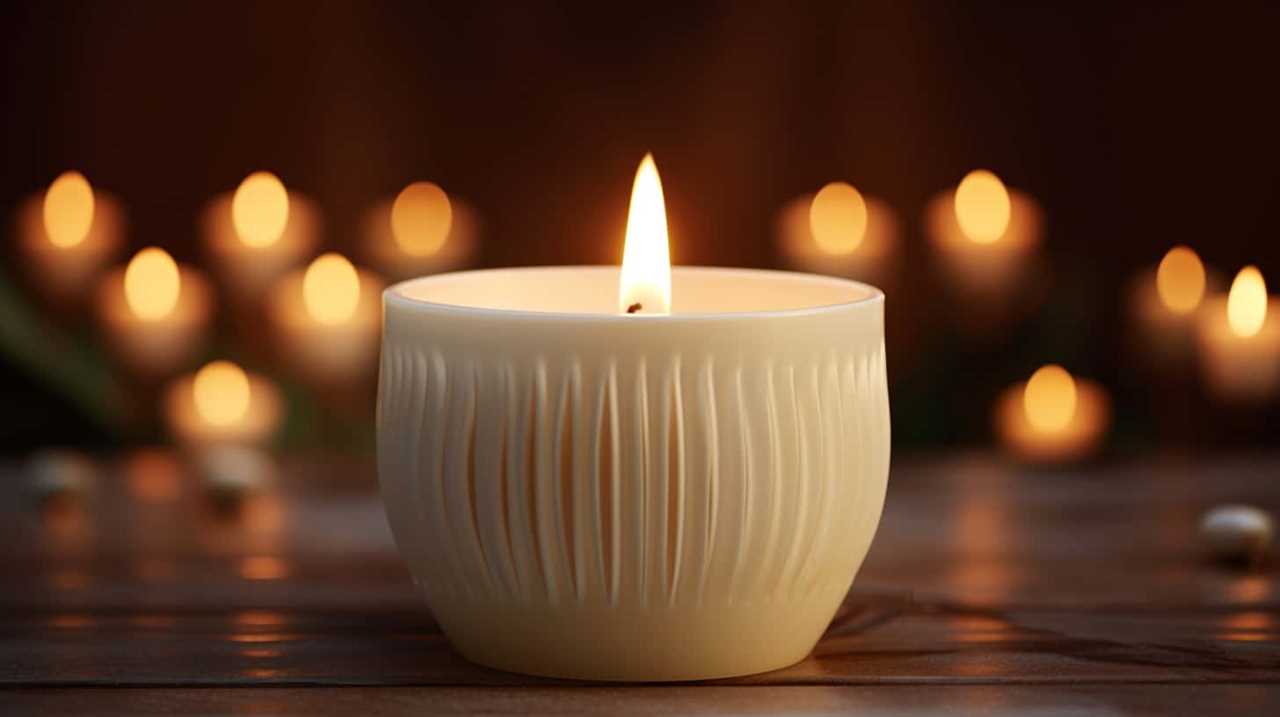
Can Leftover Candle Wax Be Used to Waterproof Matches, and if So, How Effective Is It?
Leftover candle wax can indeed be used to waterproof matches, and it’s surprisingly effective. It’s just one of the many alternative uses for candle wax. Let us share some more waterproofing methods with you.
Are There Any Specific Types of Cheese or Fruits That Are Best Suited for Coating With Leftover Candle Wax?
When it comes to cheese pairing, there are many options to consider. From creamy brie to sharp cheddar, leftover candle wax can help preserve their flavors. The same goes for fruits, ensuring they stay fresh and delicious.
Conclusion
In conclusion, there are numerous ways to repurpose leftover candle wax.
One option is to make new candles, wax melts, fire starters, or waterproof matches. These are all practical uses that can help you make the most of your leftover wax. Another option is to use the wax for wax seals, which can add a personal touch to letters or invitations.

If you want to get more creative, you can also use leftover wax as a wax paper alternative. This can be useful for wrapping food or covering dishes.
Beyond practical uses, you can also explore the world of DIY by making homemade lip balm, wax crayons, or engaging in fun wax art projects. These activities can be a great way to unleash your creativity and give your leftover wax a new life.
So, don’t let that leftover wax go to waste. Instead, embrace the possibilities and give it a second chance. Remember, as the saying goes, "One person’s trash is another person’s treasure."






